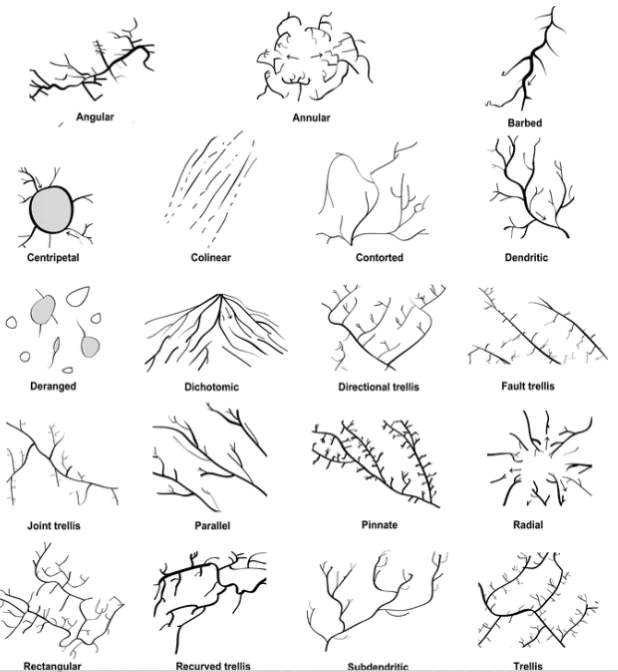![]() May 4, 2024
May 4, 2024
![]() 3082
3082
![]() 0
0
Drainage patterns offer insights into a region’s geological history, revealing how rocks and landscapes have evolved over time. By examining drainage patterns, we can map the underlying geology and topography of an area and also understand the impact of natural and human factors on the landscape’s formation. Understanding these dynamics is crucial for predicting future changes and managing natural resources effectively.
Dendritic Drainage Pattern: Resembles the branches of a tree; develops in region with uniform lithology,
 Rectangular Drainage Pattern: Main stream and tributaries join at right angles, formed in regions with faulting,
Rectangular Drainage Pattern: Main stream and tributaries join at right angles, formed in regions with faulting,
| Must Read | |
| Current Affairs | Editorial Analysis |
| Upsc Notes | Upsc Blogs |
| NCERT Notes | Free Main Answer Writing |
In the complicated web of rivers and streams, nature creates beautiful designs with different drainage patterns. Some look organized, while others seem random. Each pattern shows how the land was formed by things like rocks and weather. By looking at these patterns, we can learn about the history of the earth and how it’s still changing today.
<div class="new-fform">
</div>

Latest Comments